The Graph
Getting historical data on a smart contract can be frustrating when building a dApp. The Graph provides an easy way to query smart contract data through APIs known as subgraphs, which utilize GraphQL. The Graph's infrastructure relies on a decentralized network of indexers, enabling your dApp to become truly decentralized.
Quick start
These subgraphs only take a few minutes to set up and get running. To get started, follow these three steps:
- Initialize your subgraph project
- Deploy & publish
- Query from your dApp
Pricing: All developers receive 100K free monthly queries on the decentralized network. After these free queries, you only pay based on usage at $4 for every 100K queries.
Here's a step by step walkthrough:
Initialize your subgraph project
Create a subgraph on Subgraph Studio
Go to the Subgraph Studio and connect your wallet. Once your wallet is connected, you can begin by clicking "Create a Subgraph". Please choose a good name for the subgraph: this name can't be edited later. It is recommended to use Title Case: "Subgraph Name Chain Name."
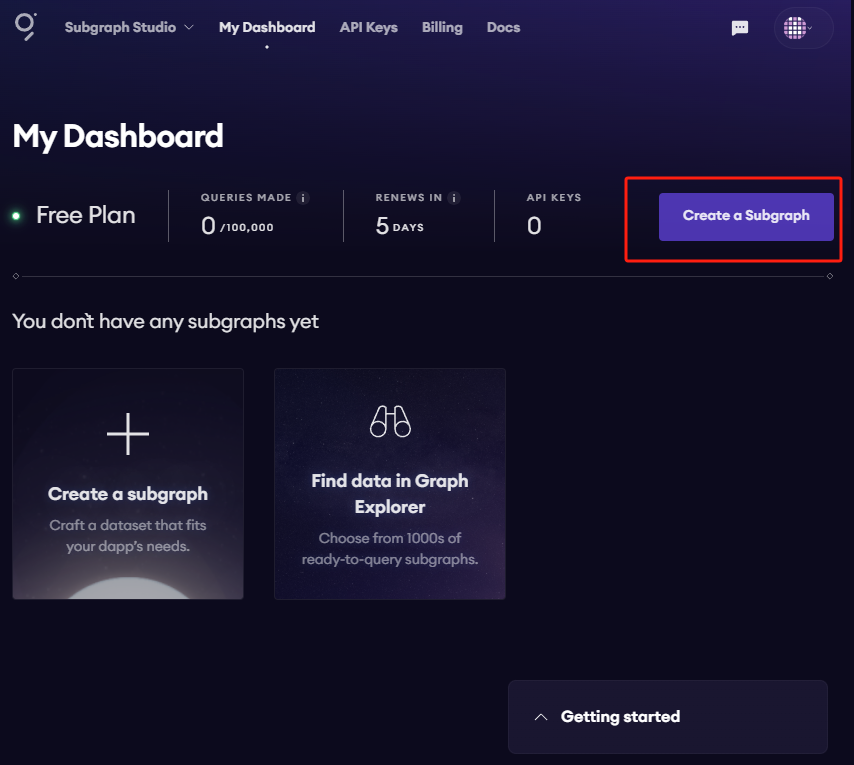
You will then land on your subgraph's page. All the CLI commands you need will be visible on the right side of the page:
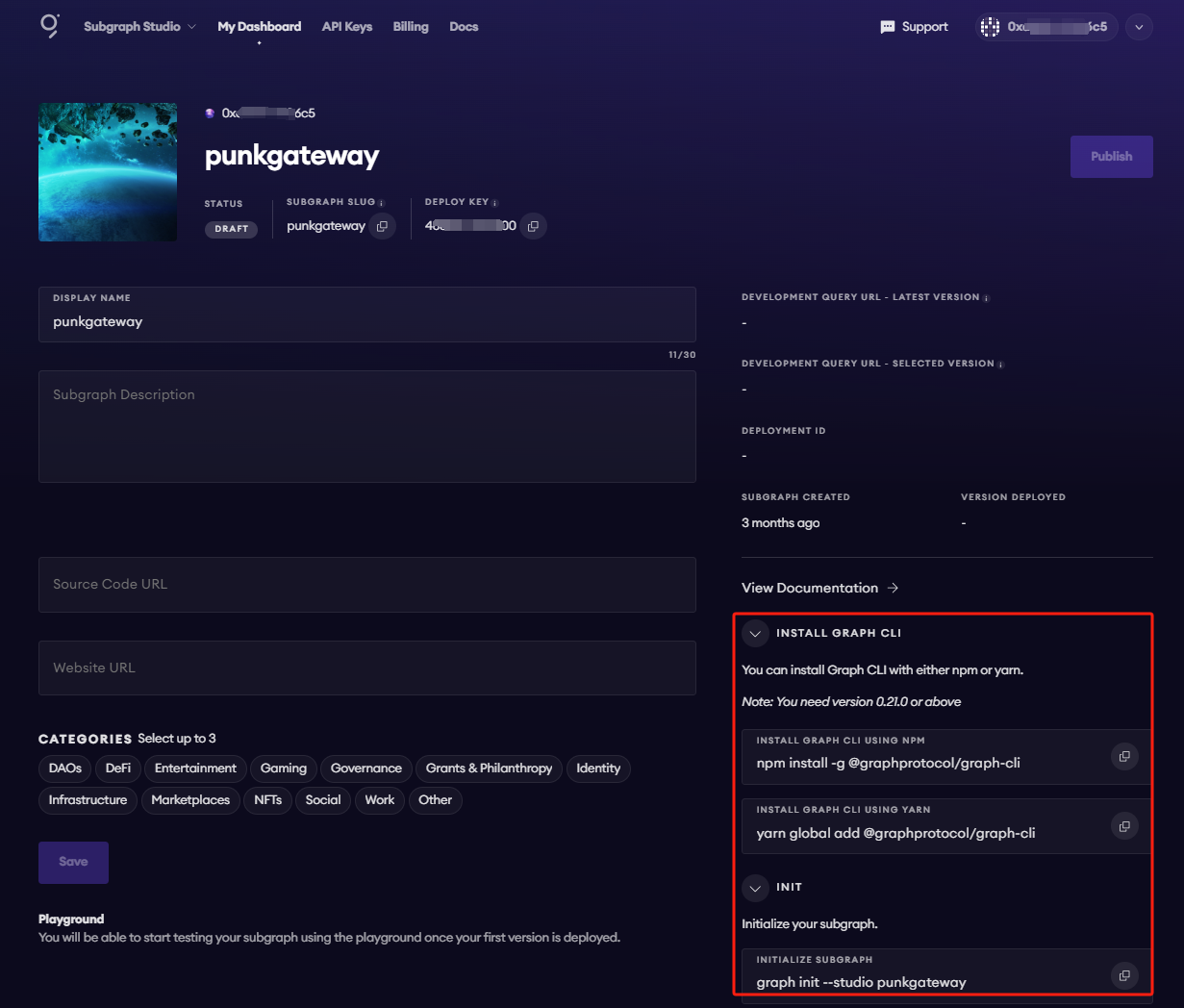
Install the Graph CLI
On your local machine, run the following:
npm install -g @graphprotocol/graph-cliInitialize your Subgraph
You can copy this directly from your subgraph page to include your specific subgraph slug:
graph init --studio \<SUBGRAPH\_SLUG>You'll be prompted to provide some info on your subgraph like this:
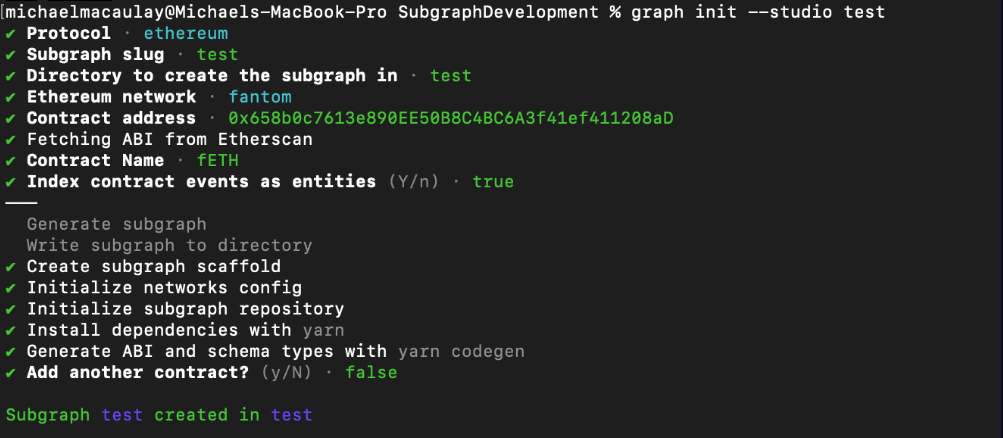
Simply have your contract verified on the block explorer, and the CLI will automatically obtain the ABI and set up your subgraph. The default settings will generate an entity for each event.
2. Deploy & publish
Deploy to Subgraph Studio
First, run these commands in your terminal
graph codegen
graph buildThen, invoke these commands to authenticate and deploy your subgraph. You can copy these commands directly from your subgraph's page in Studio to include your specific deploy key and subgraph slug:
graph auth --studio \<DEPLOY\_KEY>  
graph deploy --studio \<SUBGRAPH\_SLUG>You will be asked for a version label. You can enter something like V0.0.1, but you're free to choose the format.
Test your subgraph
You can test your subgraph by making a sample query in the playground section. The Details tab will show you an API endpoint. You can use that endpoint to test from your dApp.
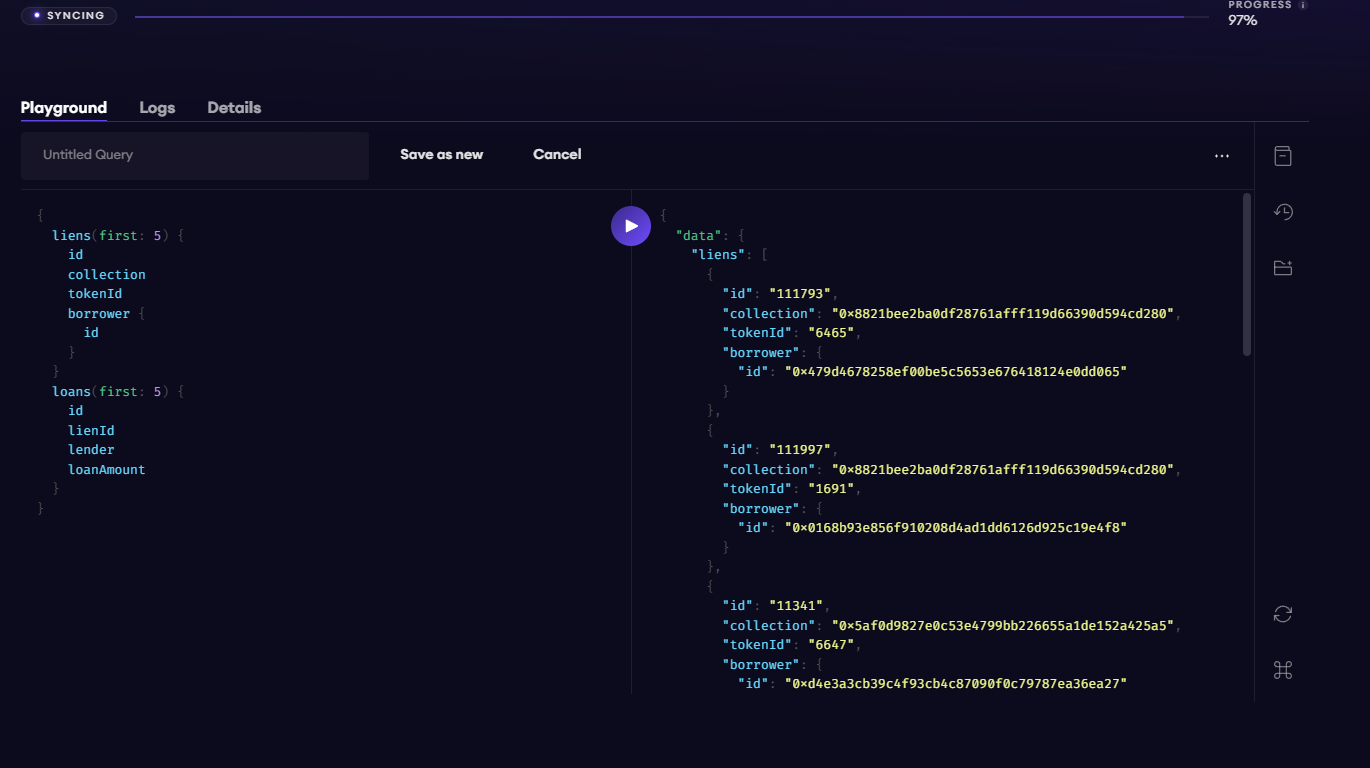
Publish your subgraph to The Graph's decentralized network
Once your subgraph is ready for production, you can publish it to the decentralized network. On your subgraph's page in Subgraph Studio, click on the Publish button:
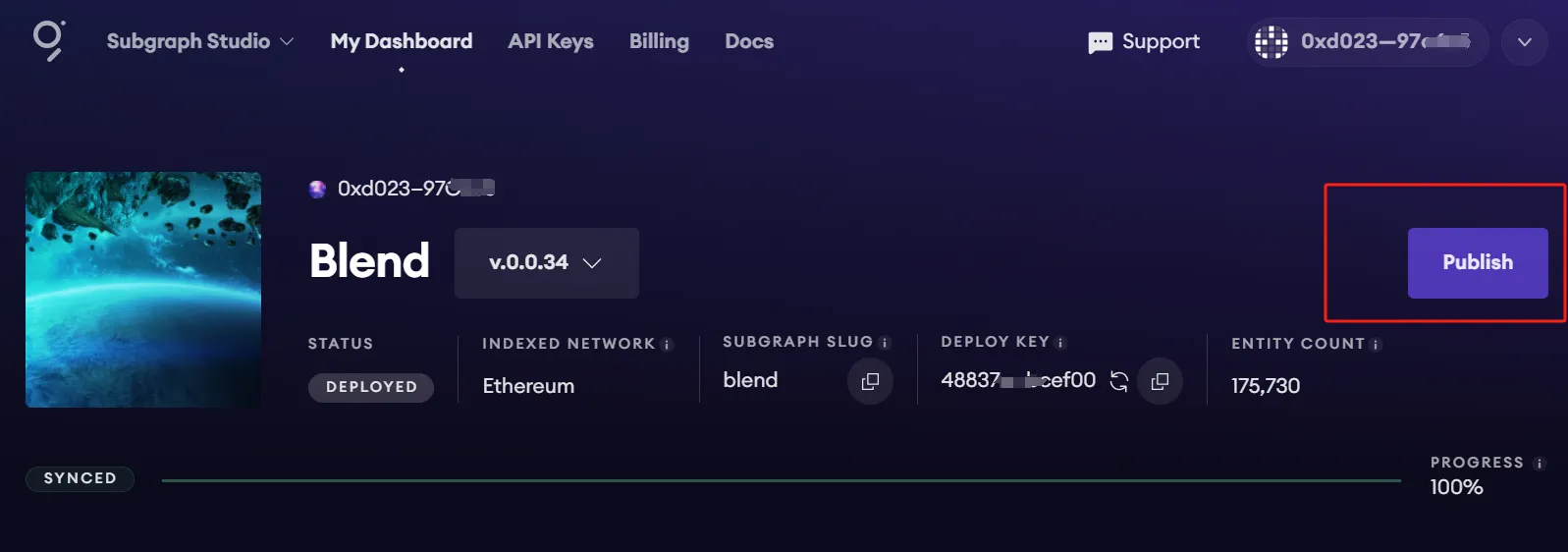
Before you can query your subgraph, Indexers need to begin serving queries on it. In order to streamline this process, you can curate your own subgraph using $GRT.
When publishing, you'll see the option to curate your subgraph. As of May 2024, it is recommended that you curate your own subgraph with at least 3,000 $GRT to ensure that it is indexed and available for querying as soon as possible.
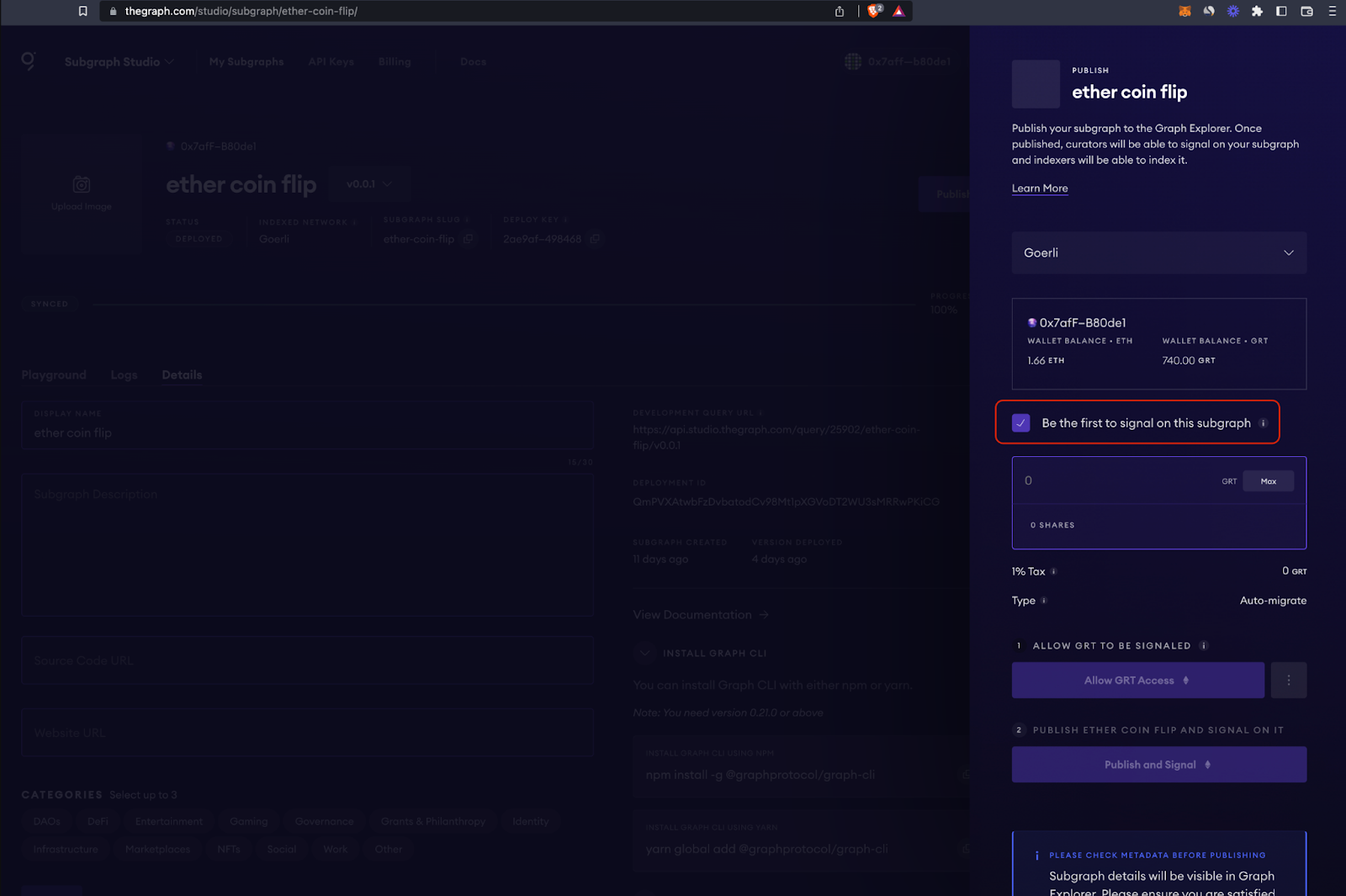
3. Query your Subgraph
Congratulations! You can now query your subgraph on the decentralized network!
You can start querying any subgraph on the decentralized network by passing a GraphQL query into the subgraph's query URL, which can be found at the top of its Explorer page.
Here's an example from the CryptoPunks Ethereum subgraph by Messari:
Query URL
The query URL for this subgraph is:
Now, you simply need to fill in your own API Key to start sending GraphQL queries to this endpoint.
Getting your own API key
In Subgraph Studio, you'll see the "API Keys" menu at the top of the page. Here, you can create API Keys.
Additional resources:
To explore all the ways you can optimize & customize your subgraph for better performance, read more about creating a subgraph here.
You can find more information in our article about querying data from your subgraph.
4. Goldsky
Goldsky is another indexing service based on TheGraph that supports the same subgraphs built and deployed to TheGraph.
Start by installing the Goldsky CLI.
curl https://goldsky.com | shVisit the Project Settings page in the Goldsky dashboard and create an API key, then log in from the terminal.
goldsky loginThe commands for compiling and building your subgraph are the same as for thgraph above.
To deploy however, you will use the goldsky command.
goldsky subgraph deploy moksha/1.0.0 --path .You can also delete deployments from the terminal.
goldsky subgraph delete moksha/1.0.0Updated 3 months ago
